One of the best ways to appreciate the Doñana National Park is from the back of a horse.
By Nick Nutter | Updated 15 Mar 2022 | Huelva | Places To Go |
Login to add to YOUR Favourites or Read Later
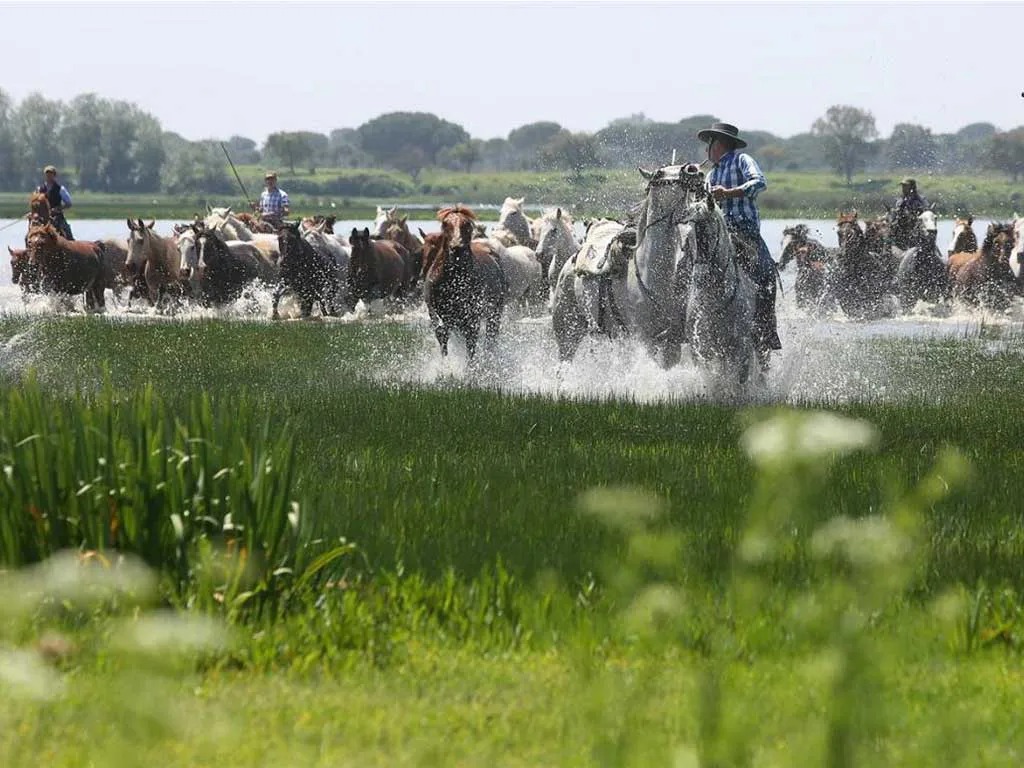
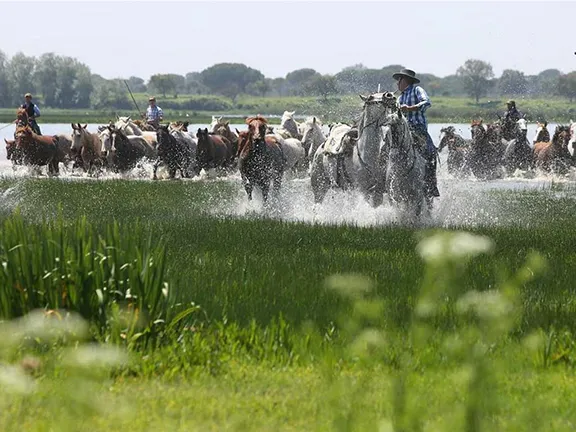
Saca de las Yeguas
Where in Spain garners comments such as, ‘The area is the ultimate playground for horse lovers’ or ‘ If I could give this place six stars I would’ and ‘ A scenery to take your breath away’?


El Rocio
You would be in the Doñana National Park and one of the best ways to appreciate the Doñana is from the back of a horse.
The Doñana Nature Area is considered one of the most important natural protected areas in Europe. A key crossroads for migratory bird routes between Africa and Europe, it is also the last refuge for many endangered species such as the Iberian lynx, the Imperial Eagle and the Spur-thighed tortoise. The Doñana has the highest biodiversity in Europe, in particular bird species. Over 300 bird species inhabit this territory, of which nearly 130 breed here. Given that most are waterfowl, their preferred habitat is the extensive marshes in the Park. There are also 37 mammal species, 21 reptile species, 11 amphibian species and 20 freshwater fish species. Not to mention the thousands of invertebrate species (insects, annelids, arachnids, etc.) that inhabit the Park, many of which have yet to be classified.
Doñana is a complex mosaic of landscapes forming a paradise for birds, other wildlife, flora and fauna in the most important wetlands in Europe. Situated between the provinces of Huelva, Seville and Cádiz, in the south-west of the Iberian Peninsula between the mouths of the rivers Tinto and Guadalquivir, its southern tip is shaped by extensive untouched beaches washed by the Atlantic Ocean. The territory is home to fourteen municipalities. Doñana is now a labyrinth of land and water that shapes the marshes, spectacular lakes and channels, reserves and pine forests, streams and banks, dunes, beaches and cliffs. Bonanza, Gallega, Ribetehilos and El Lucio del Cangrejo are good examples of the lagoons that dominate this area, providing shelter for thousands of birds.
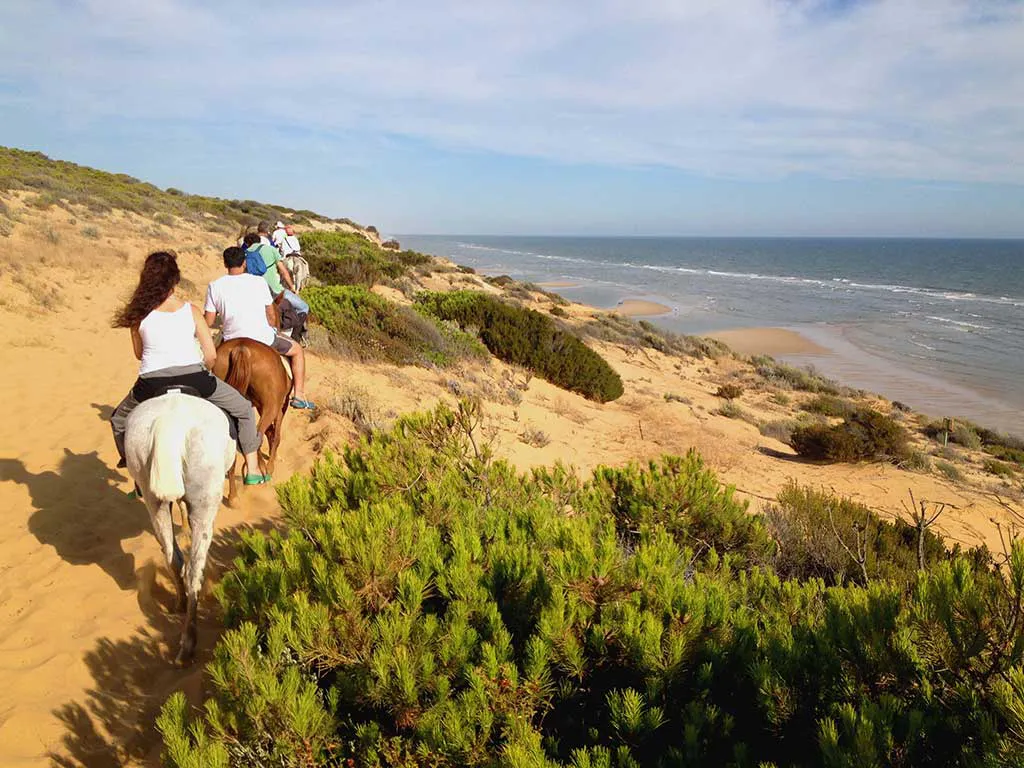
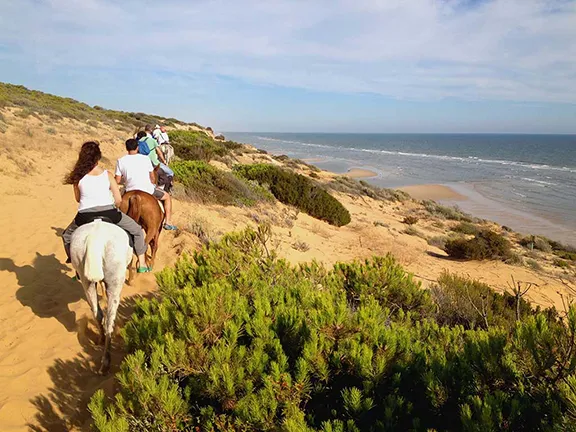
Trekking in the dunes
There are over 25 kilometres of unspoilt beach and white sand, including the 30 metres high fossil dunes of the Asperillo, and, on the beach, the cliffs with the same name, made of orange and ochre sandstone due to the rich iron oxide waters that flow through the chorritos. Hundreds of kilometres of tracks through the forests and scrub lands provide a lifetime’s worth of trekking experience.


Donana dune
We take you from our meeting point in a comfortable transport to the beaches of the Doñana Natural Park to enjoy a 2-hour route through this beautiful and wild natural space. At the end of the route our guide will accompany you to a good local restaurant and advise you on the best menu specials (lunch not included in the tour price). After lunch we will stop to visit El Rocio, its hermitage and its marsh before returning you to Seville.
On this route you can enjoy a pleasant horse ride along the seashore, we will visit its dunes (with its spectacular viewpoints to the sea) and returning through the interior of the Natural Area of Doñana where you can observe closely the native fauna and flora

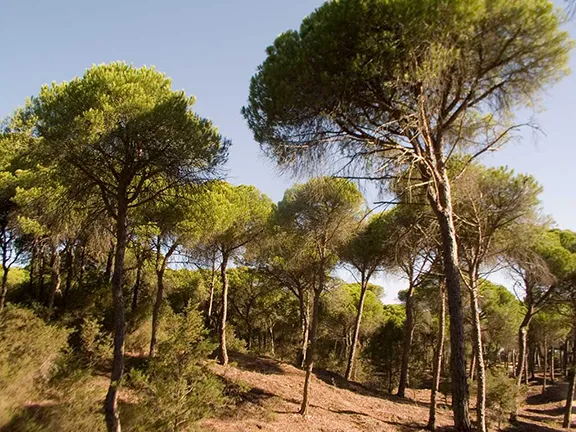
Pine forest
The Mediterranean forests are dominated by the stone pine and shrub lands. Both depend on the largest aquifers in Spain to survive. Plant species such as rockroses, sage-leaved rockrose, rosemary and mastic offer shelter for mammals, such as the lynx, rabbit, hare, badger and red fox. You may also see wildcats, otters, polecats, weasels, mongoose and, introduced from Africa by humans, genets. Larger mammals include red deer and fallow deer.
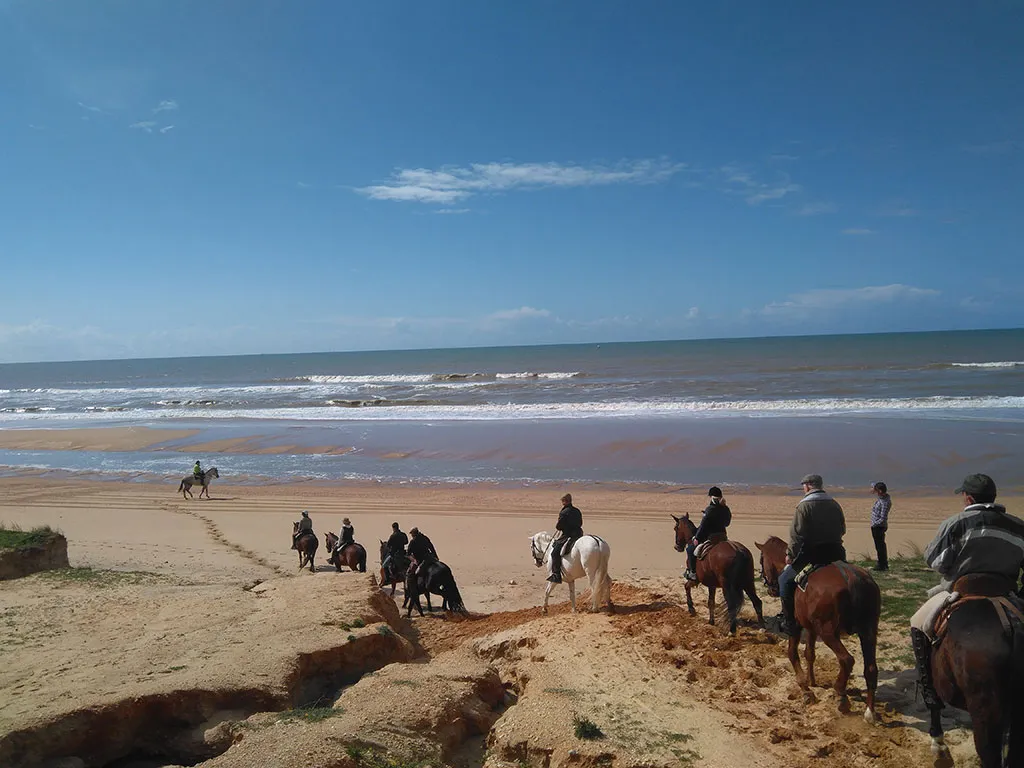

Trekking on the beach
For a complete list of the mammals that may be seen in the Doñana visit the Discovering Doñana website
For a list of birds and the seasons you should see them visit the Birds of DoñanaFor insects, reptiles, amphibians, arachnids, fish, crustaceans, molluscs, jelly fish, lampreys and flatworms, you need to visit the Eco Register.
Watching the sunset in Doñana is one of the most beautiful experiences in the world. Its special light, the fine sand of its beaches. With this tour we take you to Doñana to enjoy an unforgettable experience. Before reaching the beach of Matalsacañas where the 2-hour horse ride takes place we will stop at El Rocio. We will make a guided tour of its streets, its marsh and its Hermitage. Our guide will advise you a popular restaurant and guide you in choosing the menu if you wish (lunch not included in the price of the tour). After lunch we will follow the route on horseback until sunset.
Enjoy a magical sunset on the virgin beaches of Doñana, filling you with unique sensations and unforgettable moments. On this route we will enjoy a pleasant horseback ride along the seashore, watching the sunset, with the unbeatable light and colour the best of the sunsets on the Costa de la Luz.
Horse lovers will adore the Marismeña Horse, a unique race of horses here in the Doñana National Park. These horses are the original American mustangs. They were imported to America on ships from Huelva, starting with Christopher Columbus in the 16th century. Herds of these horses can regularly be spotted in the vicinity of El Rocio.
For the past 500 years on the 26th of June, the mares and their foals, born in the marismas of the Doñana National Park, are brought by the Yegüerizos, the local horse men and women, first to the church in El Rocio to be blessed. Then they proceed through the streets of Almonte to the Recinto Ganadero, the livestock corral, where they are cleaned, vaccinated, reshod, their manes are cut, the foals are branded and some horses sold. After three days they return to their grazing grounds in the Doñana. Up to 1,500 horses are herded to and from their grazing areas.
There is a monument to the Yegüerizos in Almonte which says: “For he who has never won a horse in the swamp, does not know what it means to ride.”
On the edge of the park is the town of El Rocio. It is the only town in Spain with sandy streets because the most common form of transport is the horse. Experience all this and more with our exclusive tours.
The Andalusian horse is famous worldwide. Originally from this region, it is one of the oldest equine races in the world. You have the opportunity to take a ride on the back of an Andalusian horse through the Sevillian region of El Aljarafe, a horse ride route that you will never forget. There is nothing more relaxing than riding on a horse. A professional guide will accompany you to the equestrian centre and there, after receiving some safety guidelines, you will climb on the back of the horse to enjoy this incredible experience with Andalusian nature and fauna. During the tour, you will discover each of the fundamental characteristics of these animals, a breed that is appreciated worldwide, in a natural Mediterranean environment. You will come to appreciate the qualities that have made Andalucia one of the world leaders in the equine sector.
Discover the countryside outside of Seville while riding an Andalusian horse, one of the world’s most famous breeds. Enjoy this unforgettable 2-hour horseback riding experience.
Here is what some travellers have said about horse riding in the Doñana park.
If you are in the area of Doñana National Park near El Rocio and you are a horse lover, DO visit this place and book a tour...My daughter Tara loved the morning walk through the woods and the dunes…
This ride was the highlight of our holiday! Riding through El Rocio had been on our bucket list for a while and I am so glad we did it. The horses are very fit and experienced. Thank you so much we will be back!! Miriam and James.